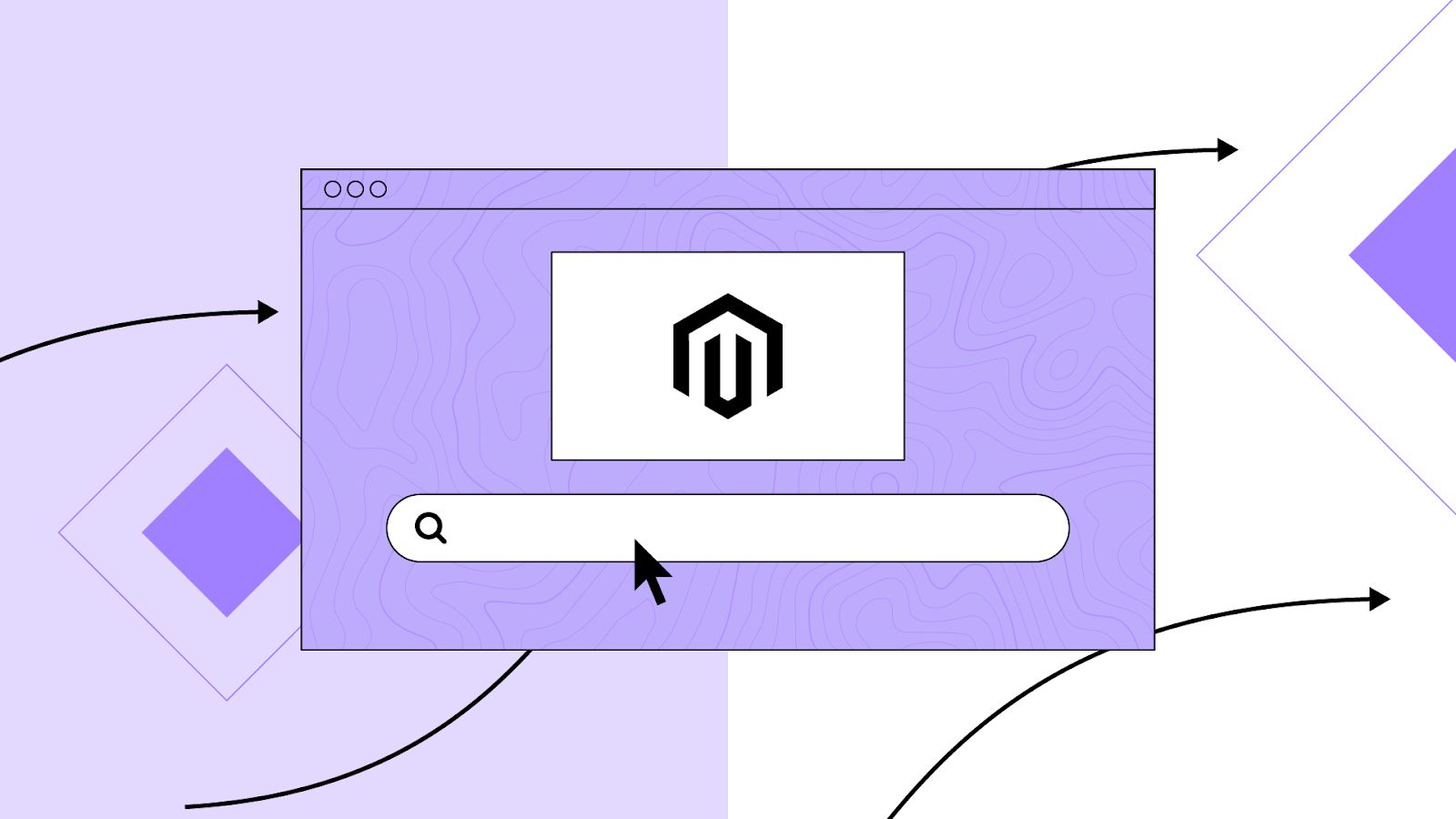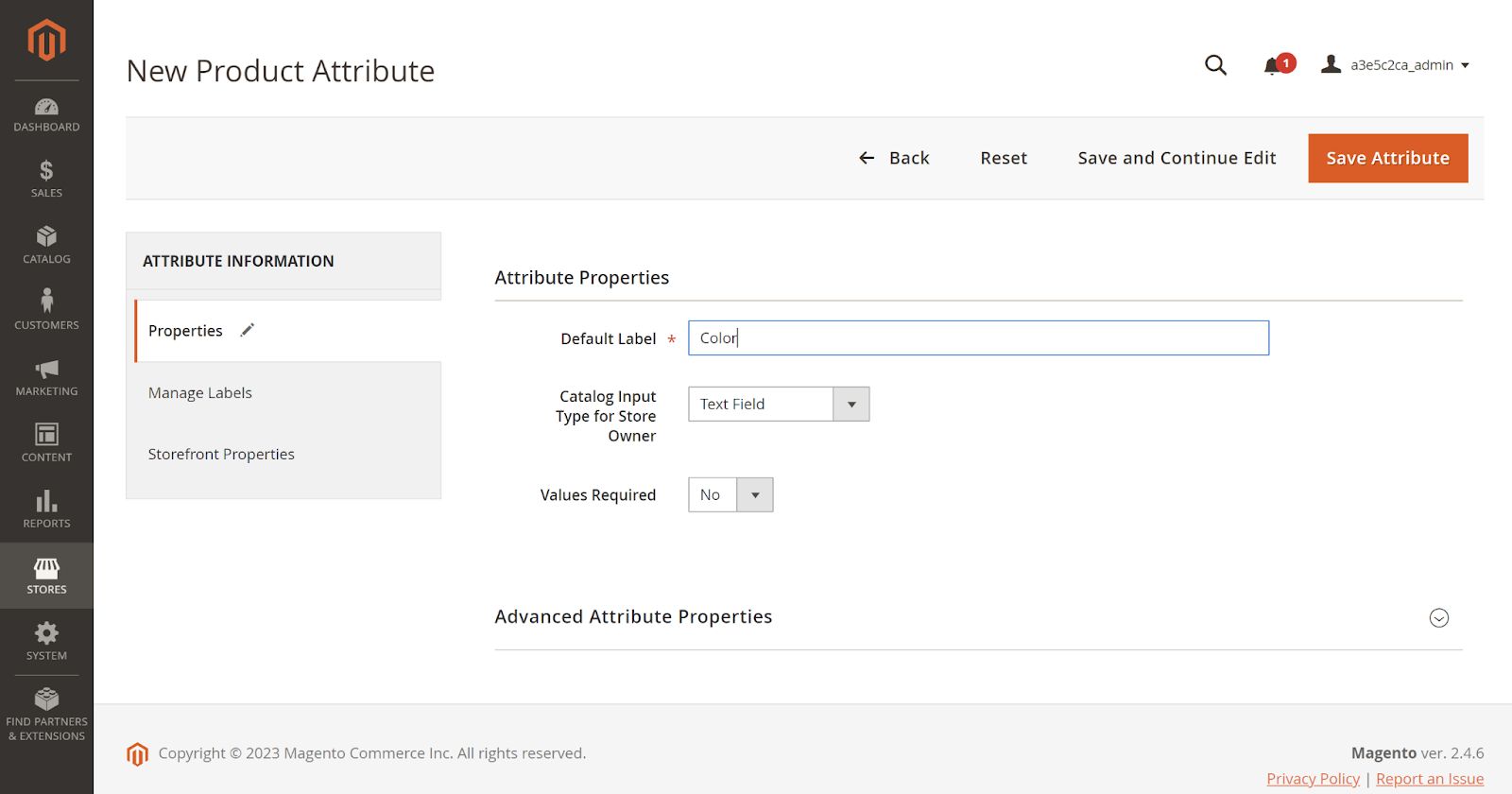If you’re a high-traffic ecommerce retailer, your online storefront is your bread and butter, and its performance drives earning potential.
And if you use Magento, there are many ways to optimize your store and its performance.
One way to improve your ecommerce website’s performance — in turn improving metrics like traffic, conversions, and revenue — is by optimizing its Magento product search.
Although product search might not seem like the most vital aspect of your online store, its quality decidedly impacts user experience and ultimately influences business success.
Optimizing your Magento product search features helps ensure customers easily find what they need, so they make purchases instead of leaving frustrated.
Here’s what we’ll cover:
- Magento product search explained
- Why is improving Magento product search important?
- What to do before optimizing Magento product search
- Top tips to improve Magento search for your products
- Final thoughts: How to improve Magento product search
Magento product search explained

The Magento ecosystem is an open-source platform for creating and running online stores. It offers two versions, but Adobe Commerce — previously called Magento Commerce and also referred to as Magento or Magento 2 — is the one most enterprise-scale, high-traffic retailers use.
In this article, we’ll call this platform “Magento.”
Magento product search is the core functionality that allows users to search for products directly on your Magento-powered website.
Why is improving Magento product search important?
Customers can’t purchase your products if they can’t find the items they’re looking for — and you can’t make money without customers making purchases — so it’s critical to make locating products as easy as possible.
Improving product search helps your click-through rate (CTR), conversions, and overall revenue.
A 2023 Nosto study found that a whopping 80 percent of shoppers will exit a website because of poor search functions, making optimizing your Magento product search vital.
But before you dive into adjusting your product search to maintain a high-quality online store, there are a few crucial steps you’ll need to take first.
What to do before optimizing Magento product search
1. Research website search strategies.
2. Analyze metrics.
3. Ask for feedback.
1. Research website search strategies

A competitive analysis to analyze your competitors’ website search strategies, homepage layouts, user experience (UX) approaches, and featured search elements is a good place to start evaluating Magento product search needs.
A simple Google search and keyword research helps determine which terms users in your industry are searching for and their primary priorities.
Knowing what competition you are facing will help you target your efforts to make the biggest changes first.
2. Analyze metrics
You’ll need to track relevant ecommerce metrics for your website. Look at metrics like click-through rate (CTR), conversions, and bounce rate, and compare them with industry averages to determine which areas you can potentially improve on.
You can also use these numbers as benchmarks and refer back to them after you make Magento product search changes to evaluate the impacts of your efforts.
You should also determine website-search metrics like total unique searches, search exit, and search refinement and compare them with industry averages. These give you even more insight into potential areas for improvement compared to similar companies
As you progress through improving your website search, you’ll need to monitor these metrics over time with tools like Google Analytics.
3. Ask for feedback
What’s more valuable than feedback directly from the people you’re selling to? It’s vital to ask users about the Magento product search experience they have on your website, as this is the simplest way to determine which changes will be most effective.
You can ask for feedback regarding Magento product search experience and overall user experience via:
- Popup multiple-choice surveys.
- Open-ended page-specific surveys.
- Net Promoter Score (NPS) surveys that ask customers how likely they are to recommend your product or service after an interaction or sale.
- Online polls.
Knowing what customers are satisfied with allows you to avoid making unnecessary changes. And learning what they aren’t satisfied with shows you what you should work on.
You can leverage and implement your findings to decide on the most essential elements to tackle first. You can also use them to inform your decisions throughout the improvement process.
Let’s discuss key strategies for improving Magento product website search and conversions.
Top tips to improve Magento search for your products
- Enhance the overall user experience.
- Personalize search results.
- Think mobile-first.
- Strategically select product attributes and search terms.
- Streamline your product categories.
- Focus on the visuals.
- Feature user-generated content.
- Utilize Elasticsearch 7.
- Configure search settings.
- Optimize performance and speed.
Enhance the overall user search experience

To enhance the user experience for Magento product search, you’ll need to refer back to your findings regarding growth areas, competitors’ strategies, and customer feedback.
Use your insights to determine how to organize your Magento search based on your specific industry, customer base, and business goals. You should only feature the search options that make the most sense for your customers.
For example, large-scale marketplaces like Amazon always offer an advanced search function and related product suggestions due to their massive number of products. But small businesses will likely have fewer search box filters and a smaller number of results per page. Likewise, including size choices as a filter wouldn’t make sense if you don’t sell products that come in different sizes.
Examples of specific strategies to improve website-search UX include offering autocomplete results and making results as accurate as possible by configuring your search engine settings. You can make these changes through the Magento admin panel.
Above all else, make your Magento product search easy to use and likely to produce relevant results.
Featuring the right elements in product listings is critical for optimization. You should include high-quality images and these five product attributes:
- Price.
- Product title or type.
- Thumbnail.
- Ratings.
- Product variations.
Personalize search results

Another key aspect of ecommerce user experience is personalization.
And the same Nosto research we mentioned previously revealed that 82% of brands agreed that personalized search results are critical for higher conversions. But only 34% of brands are using this approach, representing an opportunity for you to rise above the competition.
Integrating historical user data by enabling search recommendations in your Magento admin panel improves your customers’ personalized search experience.
Think mobile-first
Almost a third of U.S. adults say they use a smartphone to buy things online at least once a week, representing a huge chunk of all ecommerce sales.
Also, Google maintains a mobile-first approach to ranking. This means you must prioritize mobile devices as you design and optimize your website. The Magento product search is no exception to this rule.
If you designed your website with mobile in mind — with responsive design, accelerated mobile pages (AMP), and pages optimized for mobile devices — this step should already be almost complete.
But also make sure to place the search bar at the top of mobile screens as the header for your mobile website. Additionally, make the Magento product search bar’s purpose as obvious as possible by featuring magnifying glass icons and placeholder text.
These strategies help ensure that users can easily and immediately recognize the search bar, even on small screens.
Strategically select product attributes and search terms

Selecting the right mix of attributes and terms to label and tag your products is essential because this mix greatly impacts search results' relevance, speed, accuracy, and overall quality. It also allows users to filter their search results.
First, you’ll need to add product attributes — labels and tags representing specific characteristics of products. These attributes can be as simple as color and size, or as complex as long-tail keyword alignment.
You can add attributes by going to your admin panel, navigating through Stores > Attributes > Product, and adding a descriptive Default Label. Then you can configure the attribute type, which determines available options and influences what the customer sees on product pages.
Next, you can define advanced attribute properties and assign different search weights to various attributes by navigating through Stores > Attributes > Ratings. That ranks how important each attribute is in determining search results.
You can also create attribute sets by navigating through to Stores > Attributes > Attribute Sets, making it easier to prepare similar items for Magento product search.
Finally, you should carefully add Magento search terms aligning with your product attributes.
To select an optimal mix of attributes and terms:
- Tailor attributes and terms to your user: Read reviews, monitor website activity, and analyze user behavior to determine which exact terms and attributes customers are searching for.
- Prioritize product name above all else: As this attribute is the way most users search for an item, it should be heavily weighted.
- Consider SEO when selecting attributes and terms: Do keyword research and monitor terms on search engines.
- Weigh determinate attributes highly: These are the item features that will determine customers’ purchase decisions. For a fast-fashion retailer, price is one example. But for a luxury jeweler, carats, clarity, or settings are more likely to finalize buyer decisions.
- Check your competitors’ attributes and terms: Sometimes, customers copy search terms from a similar store and paste them into another website’s search bar. So by using similar terms as your competitors, you may increase traffic.
Streamline your product categories

As layered navigation, or hierarchical product category sorting, is the default on Magento product search, you can easily add root categories and subcategories to that hierarchy by navigating through Catalog > Categories and inputting your selections.
When deciding how to sort products, you should avoid overcategorizing in your catalog search strategy.
Although adding classifications is helpful, featuring too many makes it hard for users to compare similar items when searching for items in different categories, causing users to leave your website.
For example, if there are separate categories for “Adidas shoes” and “Reebok shoes,” it isn’t user-friendly for people looking for running shoes. Instead of using too many categories in your website navigation, you can opt for filters and allow users to select multiple options simultaneously.
The right number of categories for your website varies greatly based on the size of your inventory and your range of products. Use common sense and customer feedback to determine the appropriate number of categories for your ecommerce store.
Focus on the visuals
Although technical website elements are extremely important for improving Magento product search, ecommerce is a primarily visual medium that requires close attention to the front end of a website.
Your website-search function should be designed like your website: streamlined, clutter-free, and aesthetically appealing.
Add your search bar in a prominent spot where it’s effortless for users to find, and include placeholder text and feature colors aligned with your brand. The “submit search” button should stand out visually, with bold lettering or an eye-catching color.
Feature user-generated content
Integrating user-generated content (UGC) on your website-search results pages is another excellent strategy for improving your Magento product search.
Some online retailers utilize user-generated images in product image sets. This means that when potential buyers search for items, they see results with a real customer’s image of that item. Other sellers feature blurbs of reviews or star ratings prominently in results.
Although UGC is characteristically less curated, optimized, and aesthetically refined than content your business can produce, it instills trust in buyers and builds brand awareness.
Utilize Elasticsearch 7

Since the release of Magento 2.4, all versions of Magento have Elasticsearch, an enterprise-grade search engine, as the default option.
We compared Elasticsearch with other Magento product search alternatives — such as MySQL, the original default Magento search engine —and found that it’s faster, more accurate, and more flexible.
If you created your website before Magento switched to Elasticsearch, configuring this superior search engine is a great way to improve your search function instantly. We recommend selecting version 7 rather than version 5 in order to get the best search tools.
You can do this easily via your Magento admin panel by navigating through Stores > Configuration > Catalog > Catalog > Elasticsearch 7.
Configure search settings
Once you install Elasticsearch, you should configure search query options to match search terms to queries. Navigate through Stores > Configuration > Elastic Search > Catalog on the Admin Panel and select the desired search criteria settings.
Examples of queries include Fuzzy search, which accounts for typos, and Wildcard Search, which allows users to get relevant results by inputting an unfinished word. You might also add Synonyms, like “couch” and “sofa.”
You should select a range of Magento product search filters to help customers streamline relevant search results. Examples include Model, Color, and Price. You can also decide on match types, or the exact ways you want searches to align and match with terms.
For example, if you choose an And match type, users who search the words “Nike shoes” will only see results containing both search terms. But if you select an Or match type, users will see results with either term in the product name.
The customization possibilities here are seemingly limitless, and some can only be configured from the back-end. So you may want to elicit help from experts or tutorials when determining and executing the best configurations for your website.
Optimize performance and speed

First, you should use speed-testing tools like Google’s PageSpeed Insights or WebPageTest. These provide a benchmark by calculating loading speeds for website-search results pages.
You can also use developer tools or plugins like MageTools and Xdebug. These resolve bug-related issues and optimize your entire website’s performance, improving your Magento product search function as a result.
Then you can get to work improving performance and speed. Here are some ways to do that:
- If you haven’t already, select a high-quality hosting provider.
- Update your Magento website.
- Download lightweight Magento themes.
- Optimize your product images.
These activities improve speed and performance for your entire website, in turn speeding up your search function.
Final thoughts: How to improve Magento product search
Improving your Magento product search is an easy way to optimize your website, increase your conversions, and reduce your bounce rates.
Before starting the process, you’ll need to conduct research, determine key metrics, and collect feedback to decide which elements to focus on.
And once you start optimizing your Magento website search, you should continuously refer back to your findings for guidance while undertaking the list of strategies featured in this article.
If you’re a business leader running a Magento website and aren’t already working with Nexcess — the #1 enterprise platform for Magento — contact our expert team today.
Magento was literally built on Nexcess servers, so our hosting services are optimized for helping you build a better ecommerce website and accelerating your revenues.
We provide enterprise hosting for Magento, custom-tailor your package to your specific needs, and support your teams with 24/7/365 expertise.
Check out our plans or reach out to get started today.

